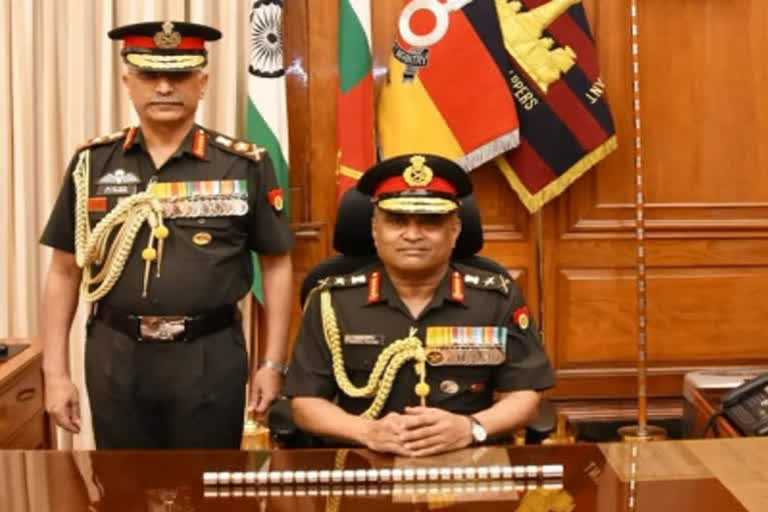New Delhi: Moving much beyond the Nehruvian idea of the military being strait-jacketed with the rigid primary role of waging wars and ensuring battle preparedness, of late, the Indian military has been instrumental in spearheading major diplomatic efforts either on its own or in the collaboration with the Ministry of Foreign Affairs (MEA). Not just the defence minister, but top officials of the Army, the Navy and the Indian Air Force have been part of this ongoing effort that has received a big fillip in the recent past.
While the late General Bipin Rawat as the Army chief and then as the Chief of Defence Staff (CDS) and General Manoj Mukund Narvane as the chief of India’s 13-lakh-strong army had taken the Indian Army’s diplomatic outreach effort to new levels, newly-appointed chief General Manoj Pande indicated that the overarching diplomatic outreach effort will continue.
On Monday, talking to a group of journalists, newly-appointed Army chief General Manoj Pande indicated as much in response to a question posed by ETV Bharat: “I feel the military is an integral and inseparable part of our overall diplomatic effort. These two (military and foreign ministry) must complement each other rather than being mutually exclusive.”
“The role of the military in diplomacy has taken different forms be it the defence cooperation or the joint training that we undertake with friendly foreign countries.” “I believe there is tremendous potential for us to take military diplomacy forward in the overall effort on the results that we aspire or desire to achieve out of our diplomatic efforts.”
The recognition of the military’s role has resulted in several ‘2+2’ (two plus two) platforms where India’s defence and foreign ministers meet their respective counterparts of other countries on a common platform. India now has ‘2+2’ platforms with US, Russia, Australia and Japan. One of the notably successful military diplomatic efforts resulted in the cooperation of the Myanmarese army, also called the ‘Tatmadaw’, in combating and applying more pressure on insurgents from India’s Northeast who operate from bases in Myanmar.
It resulted in the return of Naga underground leaders Nikki Sumi to the Naga Hills on December 19, 2020 and Starson Lamkang on December 25 along with 54 more guerilla fighters underlining the success of the Indian military’s diplomacy efforts. Interestingly, the Indian delegation in the senior military commander level meetings with the Chinese PLA to resolve the ongoing military standoff between the two armies also includes a joint secretary level official from MEA.
Read: China wants to keep LAC border issue alive, says Army chief



